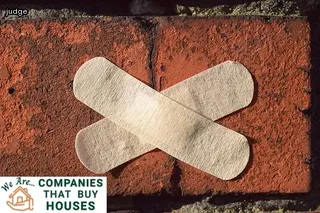As a landlord in Ohio, it is important to understand your responsibilities and the law. Firstly, Ohio landlords have the right to collect rent from tenants on time and to charge late fees if payment is not received.
Furthermore, you can evict a tenant who has not paid rent or breached their rental agreement in other ways. Additionally, you are responsible for making sure that your rental unit meets all local building codes and health regulations.
In order to recover damages from tenant property damage, it is important to document any pre-existing damage clearly before the tenant moves in and take pictures after they move out. You should also make sure to enforce the security deposit policy outlined in the lease agreement.
Lastly, Ohio landlords must follow certain procedures when taking legal action against a tenant for unpaid rent or damages caused by them. Understanding these responsibilities is key to being an effective landlord in Ohio.

Ohio landlords must abide by specific legal requirements when it comes to returning a tenant's security deposit. According to Ohio Revised Code Section 5321.
16, the landlord is required to provide the tenant with an itemized list of deductions from the security deposit within 30 days after the tenant vacates the unit. The landlord must include a statement of the current balance of the deposit, and any money due back to the tenant.
The list must also include an explanation for each deduction made from the deposit. In addition, Ohio law permits landlords to make deductions for damages that exceed normal wear and tear, unpaid rent, or if any other obligations in the lease are not fulfilled by the tenant.
Furthermore, if damages have occurred beyond typical wear and tear, it is up to the landlord to prove that they did not cause them or were not previously existing when they leased out their unit. Lastly, if a landlord fails to return a security deposit within 30 days of a tenant leaving their unit or fails to provide an itemized list of deductions from that security deposit according to Ohio Revised Code Section 5321.
16, then they may be liable for up to twice the amount of their original security deposit plus court costs and attorney fees.
When it comes to recovering damages from tenant property damage, landlords in Ohio should know what to expect from small claims court regarding security deposits. In the state of Ohio, landlords may file a claim in small claims court to recoup damages that are not covered by a security deposit.
These damages must be itemized and documented, with evidence of the damage provided, such as photographs or repair bills. Landlords must also provide proof that they have followed all landlord-tenant law requirements - including providing an itemized list of any deductions taken from the original security deposit - when filing their claim.
Additionally, if the amount being claimed is over $3,000, the case will need to be filed in regular civil court rather than small claims court. It is important for landlords to be aware that even if a claim is successfully won in small claims court, there is no guarantee that the tenant will actually pay up; legal action may need to be taken in order to secure payment from the tenant.
Knowing what to expect from small claims court before filing is key for Ohio landlords seeking compensation for damages caused by tenants.

When it comes to recovering damages from tenant property damage, consulting with a landlord-tenant attorney can be an effective way for Ohio landlords to ensure they are taking the necessary steps to secure what is owed. Landlord-tenant attorneys can help explain the rights and responsibilities of both parties under state and federal law, as well as provide advice on how to best go about recovering damages from tenants.
They can also help landlords understand their options for collecting security deposits, such as timelines for returning the deposit or withholding part of it for repairs. Additionally, lawyers are knowledgeable about how much a landlord may legally charge in terms of fees and penalties when dealing with tenant property damage.
With legal consultation, Ohio landlords can have peace of mind knowing that they are taking the right steps to protect themselves and their property in order to recover any damages due.
When it comes to recovering damages from tenants for property damage, Ohio landlords need to know the importance of tenant security deposits. Security deposits are a great way to protect yourself from potential costs associated with damage caused by tenants, as they act as a guarantee that any repair or replacement fees imposed on the landlord will be covered.
In Ohio, the maximum amount of a security deposit is two months' rent, and in most cases, the tenant has 30 days after vacating to receive their deposit back if there are no damages. Tenants may also request an inspection prior to vacating in order to ensure that their deposit is not withheld unjustly.
Additionally, landlords must clearly state how much the security deposit is and when it needs to be paid, as well as adhere to all statutory recordkeeping requirements related to these deposits. It's also important to note that should a landlord choose to withhold a portion of the tenant's security deposit for damages incurred during tenancy, they must provide written evidence of said damages and the cost of repair within 30 days of receiving notice of move-out.

Creating a move-out letter for tenants is an important step for Ohio landlords when recovering damages due to tenant property damage. It is essential that the letter clearly outlines the expectations of the tenant, as well as any potential consequences for failing to abide by those expectations.
The content should include a detailed description of the damage, estimated repair costs, and steps that must be taken in order to complete repairs. It is also important to note in the letter any relevant legal information or state regulations related to tenant property damage and repair obligations.
By including this information, landlords can ensure that their move-out letters are comprehensive and will stand up in court if necessary. Additionally, it may be helpful to include a timeline for when repairs should be completed and any associated deadlines.
This will allow landlords to more effectively recover damages from tenant property damage in Ohio while protecting their rights under landlord-tenant law.
Landlords in Ohio should always inspect the rental unit prior to a tenant's move-out. This is an important step in minimizing potential property damage that can occur when tenants vacate the premises.
By conducting an inspection, landlords can identify any existing issues or damages and make sure that they are not held liable for them later on. Additionally, making a note of any pre-existing conditions can help landlords more effectively recover damages from their tenants if needed.
It is also a good idea to document the condition of the unit with photographs or video recordings as proof if damages are discovered during the post-occupancy inspection. Landlords in Ohio should use this critical step to ensure they have proper documentation and can recover costs related to tenant property damage in a timely manner.

Preparing an itemized statement of deductions from tenant deposits is a necessary part of being an Ohio landlord. When tenants cause damage to the property during their lease, landlords may be able to recover some costs through deductions from the tenant's security deposit.
To ensure that the process is done correctly and legally, it is important for Ohio landlords to understand how to effectively prepare an itemized statement of deductions from tenant deposits. This includes having a complete understanding of all relevant state regulations, such as those regarding notification periods and documentation requirements.
Additionally, it is important for Ohio landlords to create an accurate list of damages caused by the tenant and any associated costs. The landlord should also have adequate proof of these damages before deducting them from the tenant's security deposit; this can include photos or estimates from contractors or vendors who can document the cost of repair.
Lastly, Ohio landlords should provide clear communication with their tenants about the deductions made so they are aware of why their security deposit was reduced.
When it comes to recovering damages from tenant property damage, Ohio landlords need to know how to defend themselves in court if necessary. Landlords must not only be aware of the laws surrounding security deposit disputes but also understand the importance of proper documentation and communication.
As a landlord, it is essential to document all communication with tenants and keep detailed records of any repairs or maintenance done on the property. Furthermore, it is important to provide tenants with receipts for their security deposits as well as copies of all applicable lease provisions.
Additionally, Ohio landlords should be prepared to provide evidence of the tenant's damage such as pictures or other visual proof. It is important that landlords are familiar with the state’s laws in order to protect their rights and minimize potential liability in case a tenant sues them for their security deposit.

When it comes to security deposits, landlords in Ohio have the right to recover damages from tenant property damage. To ensure that the dispute is resolved amicably and without resorting to legal action, there are a few key tips that can help.
First and foremost, communication between the landlord and tenant is essential. The landlord should provide clear expectations of what they expect from the tenant with regards to damages, while also allowing the tenant an opportunity to explain their side of the story.
It’s important for both parties to document any evidence or arguments related to the dispute so that it can be resolved quickly and effectively. Landlords should also be aware of their rights under Ohio law when it comes to recovering security deposits due to tenant damage.
In addition, both parties should be flexible and willing to negotiate in order to reach an agreement that is satisfactory for both sides. Finally, if all else fails, landlords should consider consulting an attorney who specializes in landlord-tenant disputes in order to ensure a fair resolution of the issue.
In disputes over security deposits, Ohio landlords may find themselves in a difficult position. It is important to carefully consider when it is necessary to take a tenant dispute to court.
In some cases, the tenant may be willing to pay for the damages they have caused out of pocket, while in other cases, the landlord may need to seek legal action in order to recover the cost of repairs. Landlords should be aware that if they are unable to reach an agreement with their tenant or collect payment from them through alternative means, a lawsuit may be their only option for recovering damages.
Before taking any legal action, landlords should consult with an attorney and get an understanding of the laws in Ohio governing property damage and security deposit disputes. Understanding these laws is essential for Ohio landlords seeking to effectively recover damages from tenants who have caused property damage.

Documenting damage in the rental unit is an important step for Ohio landlords when recovering damages from tenant property damage. It is essential to create documentation to accurately assess the extent of the damage, document any repairs or replacement costs, and help ensure that tenants are held accountable.
Taking pictures or video of the damage is an easy way to provide evidence of what occurred. Additionally, landlords should take detailed notes of all the damages along with a description of how it happened.
Recording any conversations with the tenant regarding the incident can also be beneficial later on in case of disputes. Landlords should also consider keeping a log of records related to tenant property damage including dates and payment receipts for repairs.
Taking these precautions will help protect landlords and make sure that they receive fair compensation for any damages incurred due to tenant negligence.
When assessing fair market value for tenant property damage, Ohio landlords should consider a few key pieces of information. Firstly, the cost to repair or replace the damaged item must be taken into account.
Landlords can use websites such as eBay and Craigslist to determine the approximate price of similar items in the local market. Additionally, it is important to remember that the cost of labor associated with replacing or repairing an item should also be included in the final assessment.
For example, if a tenant damages an appliance and it needs to be replaced, a landlord would need to factor in both the cost of purchasing a new appliance and paying someone to install it. Finally, landlords must take into account any depreciation in value due to age or wear and tear before making a final determination on how much they are owed for damages caused by tenants.

When a tenant moves out of a rental property in Ohio, the landlord may have to deduct damages from the tenant's security deposit. According to Ohio law, landlords must follow certain guidelines when recovering damages from a tenant’s security deposit.
Landlords can only withhold money from the security deposit if they provide an itemized statement of all deductions made and return the remainder of the deposit within 30 days of the tenancy ending. When evaluating damages, it is important that landlords are reasonable and consistent in determining appropriate deductions.
Damages may include unpaid rent or cleaning costs that exceed normal wear and tear for the property. If a landlord decides to make deductions for repairs, they should document repairs with photographs and provide copies to their tenants.
In addition, Ohio landlords must keep written records of all deposits and any documentation related to deducting from them. By following these steps, landlords can effectively recover damages from tenant property damage in accordance with Ohio law.
When it comes to recovering damages from tenant property damage and dealing with unpaid rent, landlords in Ohio must look beyond the security deposit. If the amount of damage exceeds the amount of the deposit or if a tenant has not paid rent, there are tools available to help landlords recoup their losses.
The first step is for the landlord to send a demand letter asking for payment or repair of any damages. This letter should include as much detail as possible about the incident, including photos or other evidence of the damage that needs to be repaired.
Landlords can also file a complaint in court requesting unpaid rent or damages that exceed the security deposit amount. In addition, Ohio landlords may be able to obtain a judgment lien, which will allow them to collect money from any real estate owned by the tenant in order to make up for any unpaid rents or damages.
Finally, landlords should consider all options when attempting to recover money from tenants, including taking legal action and negotiating an agreement with tenants regarding payments.

Ohio landlords must be diligent in ensuring that the return of security deposits is managed without dispute. To prevent potential legal issues, it is important for landlords to navigate the process of making repairs after a tenant leaves.
Steps such as keeping detailed records of all communications concerning security deposits and securing returns can help protect landlords from disputes. Additionally, Ohio landlords should document any damages caused by tenants during the lease period and follow up with the tenant if necessary to ensure that repairs are made or deductions from the deposit are issued.
Understanding the legal requirements for a landlord in Ohio when it comes to returning a security deposit can also help reduce potential disputes over refunds. Taking proactive steps before, during, and after tenancy will allow landlords to manage refunding security deposits in an effective manner with minimal contention.
In Ohio, a landlord may take legal action against a tenant who has caused property damage to the rental unit. To effectively recover damages from a tenant for property damage, landlords must follow certain procedures.
Before taking any legal action, it is important for the landlord to document all damage and send the tenant a written demand letter that outlines the cost of repairing or replacing any damaged items. If the tenant fails to respond within 30 days, landlords can file a lawsuit in small claims court or housing court.
During the trial process, landlords will be required to provide evidence such as photographs of the damage and invoices demonstrating repair costs. Additionally, if the rent was not paid prior to vacating the rental unit, landlords can sue for unpaid rent in addition to damages.
Landlords should also research their state’s laws regarding security deposits since they may be used as an alternate form of compensation for damages. In some cases, landlords may even apply excess security deposits towards covering repair costs incurred as a result of tenant negligence or malicious behavior.
Taking legal action against tenants is often necessary if they are unwilling or unable to pay for property damages; however, it is important that Ohio landlords use proper procedure when pursuing recovery of damages from tenants in order to protect their rights under state law.

It is important to understand what the most a landlord can charge for damages when recovering damages from tenant property damage in Ohio. Landlords must be aware of the state's laws and regulations regarding tenant property damage, as any violations of these regulations could result in legal consequences.
Ohio landlords are allowed to charge tenants for damages that exceed normal wear and tear on their rental unit, but the amount must not exceed the actual cost to repair or replace the damaged property. Additionally, Ohio landlords may include an administrative fee when charging for tenant property damage, provided it does not exceed 10% of the total amount charged for repairs.
Therefore, landlords should ensure that all charges associated with tenant property damage are reasonable and adhere to state guidelines. Ultimately, understanding what is an acceptable amount to charge tenants for damages will help Ohio landlords effectively recover costs associated with tenant property damage without running afoul of state laws.
In Ohio, landlords have two years from the date of the breach to file a lawsuit against their tenant for any damages caused to their property. Landlords should make sure they document all damage that occurs to the rental property throughout the tenancy, as this will be essential in proving their claim in court.
While it’s important to be aware of the legal time limits for filing a lawsuit, it’s also essential for landlords to take action right away and pursue other avenues of recovery outside of court. In most cases, landlords can recover damages from tenants by sending them an invoice or demand letter and allowing them the opportunity to pay for those costs without involving legal proceedings.
If tenants fail to respond or refuse to pay for the damages, then legal action may be necessary and must be taken within two years from the date of breach.
In Ohio, landlords are prohibited from taking matters into their own hands when it comes to recovering damages from tenant property damage. Landlords cannot threaten, intimidate, or harass tenants in any way.
They also cannot shut off utilities or lock out the tenant without a court order. Landlords must follow state laws regarding the proper process for sending notice of damages and filing a claim with the court.
Furthermore, Ohio law prohibits landlords from entering a tenant's unit without giving proper notice in advance. Finally, landlords cannot deduct any amount for damaged property from the tenant’s security deposit without first obtaining a court order allowing them to do so.